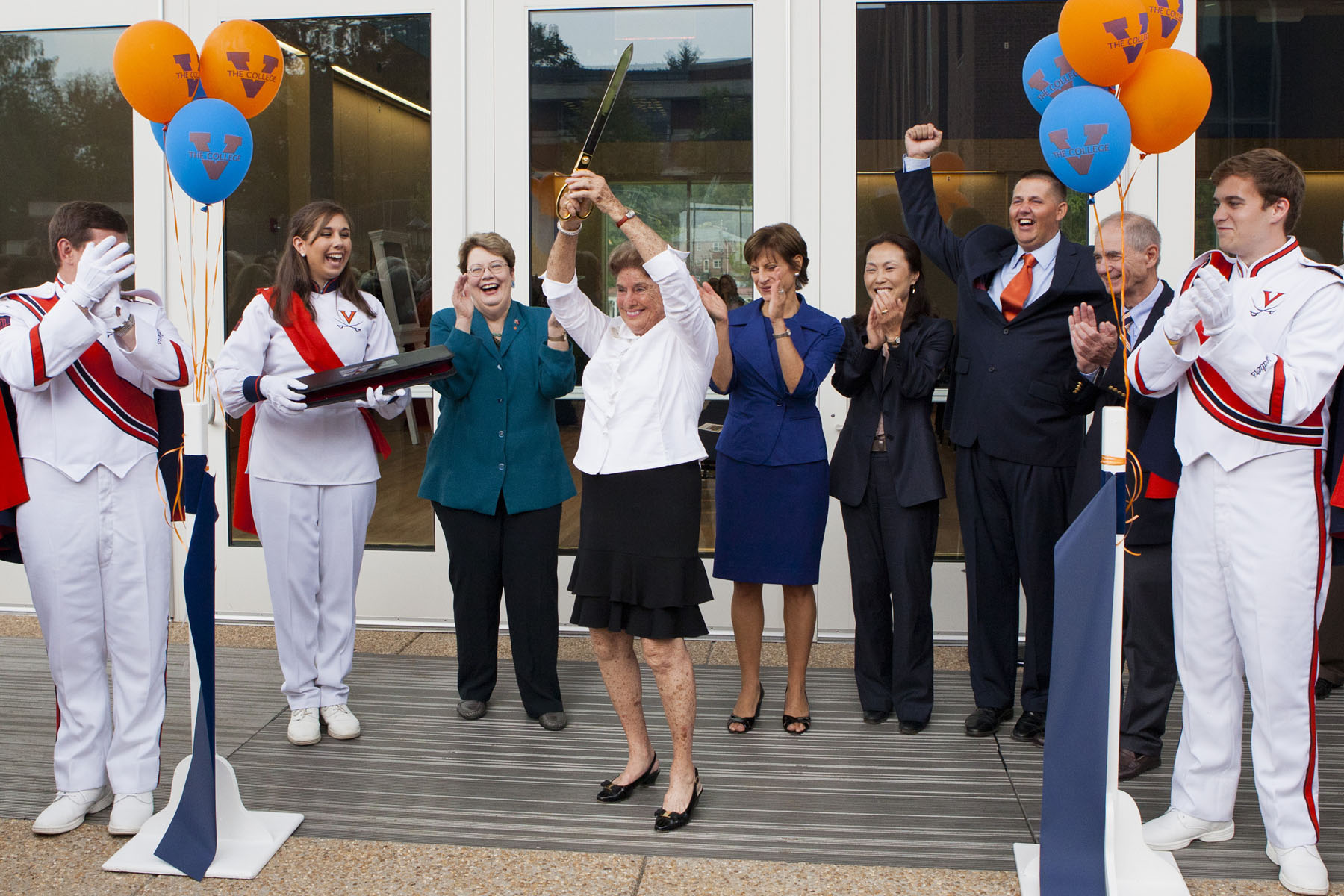Cavalier Marching Band director William Pease had meticulously checked every detail of the new Hunter Smith Band Building prior to its dedication ceremony Friday at the University of Virginia. But he was still surprised by a late addition to the state-of-the-art facility.
During his remarks, Leonard W. Sandridge, recently retired executive vice president and chief operating officer, asked Pease and Hunter Smith to unveil a plaque, and Pease received an unexpected honor: The room in which the dedication was held was named the "William E. Pease Band Room," a move that garnered a standing ovation from current and former band members and other representatives of the U.Va. community.
"I came in here to check this facility over and over. I left at 3:30 this morning and came back, and that was not there," Pease said, pointing at the plaque. "You pulled a fast one on me."
Pease and Smith also unveiled a plaque commemorating Smith's contribution to the $12.7 million facility, which contains three levels of rehearsal halls, practice rooms, instrument and uniform storage and offices. The building will host the Cavalier Marching Band, as well as its subsets, the basketball band, Olympic sports ensemble, wind ensemble and concert band.
The project, designed by William Rawn Associates, was made possible by a gift from Smith, who, with her late husband, Carl W. Smith, also gave $1.5 million in 2003 to help start the marching band program.
In addition to Sandridge and Pease, the dedication ceremony Friday featured remarks from University President Teresa A. Sullivan, Dean Meredith Jung-En Woo of the College of Arts & Sciences, and Rector Helen Dragas. All praised Smith's vision and generosity.
Sullivan characterized the band building as part of a 10-year-old plan to create better teaching and rehearsal space and performance venues on Grounds, with the aim of attracting "students and faculty whose creative abilities are matched by their passion for intellectual exploration and artistic innovation." The band building is the fifth on the Betsy and John Casteen Arts Grounds, she said, and the first to represent music.
"While many of us have enjoyed watching the Cavalier Marching Band practicing on Carr's Hill Field, I know the musicians are pleased to have a permanent home base to rehearse in all conditions," Sullivan said.
Woo noted that the building's completion would resonate with University founder Thomas Jefferson, a passionate arts patron.
"Our founder, Mr. Jefferson, was a true renaissance man: a lawyer, architect, philosopher, inventor, writer and horticulturalist. To that I would add one lesser known label: band geek," Woo said.
In 1778, during the Revolutionary War, Jefferson wrote to Italian friend Giovanni Fabroni to ask for help procuring a band of household servants who were also musicians. He sought gardeners, weavers, cabinet makers and stone cutters who could play the French horn, clarinet, oboe and bassoon.
Though the letter was intercepted by the British and the musicians never made it to Monticello, the new band building would have made Jefferson "proud that his university is building magnificent facilities that inspire and enable students and faculty to do their best work, proud that the arts are essential to the University's life, and proud that we are supporting arts programs like the marching band, which nurture self-esteem and self-expression and teach important lessons like trust, respect, unity and interdependence," Woo said.
During an emotional speech, Pease thanked those who helped make the building possible – especially Smith, whom he described as his close friend and collaborator – and recalled the effort of building the Cavalier Marching Band from an initial meeting with four participants into a vibrant ensemble with over 275 members representing 56 different majors within the University.
"We want this place to be a haven of activity, and have this thing keep growing and growing and to be a part of the University life," Pease said.
Media Contact
Article Information
September 6, 2011
/content/amid-pomp-and-circumstance-university-dedicates-hunter-smith-band-building

